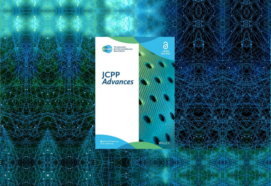Amongst professionals, whilst it is known that institutionalisation (i.e care within orphanages or other institutions), has an impact on children and young people, the effect of post-institutionalisation (PI), ie adoption after the institutionalized care, is less understood. Particularly as it has been well documented that institutionalisation not only has various negative impacts in childhood, but these also have a knock-on effect in later life as children develop (Wiik et al., 2011). Institutionalisation has been suggested to impact upon mental health across the life-course starting in childhood. The effects on mental health are vast, including an increased risk of depression (Fisher, 2010). The impacts are not limited to mental health, with psychological functioning, academic achievement, health behaviours such as alcohol consumption and many other aspects associated with having been institutionalised (Fisher, 2010).
This research digest is on DePasquale, Donzella and Gunnar’s (2018) study, which was published in ACAMH’s The Journal of Child Psychology and Psychiatry. The original looks at how the impact of pubertal recalibration was assessed amongst post-institutionalised children and its relation to stress reactivity, as assessed through biomarkers. Whilst much of the research focuses on the negative impact institutionalisation has on children, DePasquale et al. (2018) highlight the positive impact of adoption after institutionalisation, which is overlooked by the majority of research.
Pubertal recalibration is suggested to be a second period, whereby certain biological markers and stress reactivity may become typical, regardless of the environment. In relation to PI this may suggest that young people, during puberty may be able to shift their stress system and reactivity, from an atypical to typical state. This could help to reduce the impact that impaired stress reactivity may have on future external behaviours, such as aggression and emotional difficulties.
To assess whether pubertal recalibration shifted stress reactivity to a typical state, the researchers compared 122 adopted children to 158 high socioeconomic status non-adopted group and their hypothalamic-pituitary-adrenocortical (HPA)-axis reactivity. The HPA is known as out central stress response system and is connected to glands and the central nervous system. Pubertal development was assessed using the Tanner stage measure and the Trier social stress test. The Trier social stress test involved participants engaging in public speaking and verbal maths tasks.
DePasquale et al. (2018) found that early pubertal PI children had an atypical (blunted) stress response. This atypical response is consistent with previous research, that suggests that pre-pubertal or early pubertal staged children are likely to have atypical responses to stress. What does this finding mean in relation to the real-world? Well an atypical response to stressful events or situations could heighten the impact of stress on emotions and behaviour. For example, a chronic stressor in early childhood such as having been institutionialised, may affect the typical neuroendocrine and HPA response to the stressor, which is likely to have a negative impact on emotions and behaviour, such as aggression.
The main aim of DePasquale et al. (2018) study was to attempt to assess whether puberty helps to recalibrate stress responses in PI children. It was found that amongst PI children at older stages of pubertal development, cortisol levels were more typical and similar to the non-adopted group, which was not depicted in younger PI children. This lends support to the hypothesis that pubertal recalibration, at older ages of puberty may help to shift cortisol levels to a more typical state, similar to that of children who are not adopted. However, it should be noted that this finding was not significant for when stress responses/reactivity was measured. Such a non-significant finding may be due to various limitations, which will be mentioned.
Despite this non-significant finding, the result of cortisol levels being more typical and greater in older ages pubertal children, is important to highlight. Such a finding may be linked to the possibility of pubertal recalibration acting as a second chance for PI children to develop a more typical response to stress, which may have previously been dampened. Furthermore, this also highlights the plasticity of stress systems within the body. Plasticity, especially neural plasticity (the ability for the brain to change), may be seen as a vital mechanism through which support and pubertal recalibration for PI children can occur to develop typical stress responses, thus possibly reducing the risk of future emotional and behavioural difficulties.
However, as with all research it is vital to not take findings at face value. The participants in DePasquale et al. (2018) study were not a single cohort, that was assessed overtime, rather children at different ages and stages of pubertal development were compared. This is problematic in the sense that each child is different (individual differences). Children have varied experiences and perceptions, and this may impact upon how effective pubertal recalibration is for stress reactivity. For example, a PI child who is of younger age may have different experiences and development, when compared to another child and this could possibly have an impact on various aspects such as pubertal development. Furthermore, despite their being very limited ethical ways in which stress can be experimentally manipulated, the task given by DePasquale et al. (2018), lacks what is known as ecological validity. This refers to how well the findings from the study can be applied to the real world. The task of public speaking would be considered an acute short-lived stressor compared to the adverse stress of institutionalisation that may have been faced by the child, which is considered to be chronic.
Despite these limitations existing, the use of biological measures such as cortisol tested through saliva, is advantageous compared to self-reports, which are susceptible to bias.
Whilst causality cannot be assumed from DePasquale et al. (2018) study the findings should not be undermined. Highlighting puberty as a possible phase for recalibration of stress levels and possible stress reactivity, for children that are adopted after institutionalised care, could provide meaningful knowledge and a stepping stone for future research to test this hypothesis. If future research consistently supports the hypothesis, PI settings, guardians and educational institutions should facilitate the development during puberty of children who are PI and see it possibly as a means of improving stress reactivity and various other related outcomes. In addition, support for the pubertal recalibration hypothesis could also be applied to children who may have experienced other adverse life events, other than PI, such as children with separated parents and changes in primary care-givers. Hence, DePasquale et al. (2018) study should be seen as a stepping stone, for future research to test the hypothesis of pubertal recalibration and help to build a knowledge base, which emphasises the importance of facilitation during puberty in children.
ACAMH Translational Touchstones
Gaps and recommendations for further science
Future studies should examine whether the degree of supportiveness and/or stressfulness of the current environment is associated with pubertal recalibration processes in PI children.
Future studies should attempt to replicate these findings with longitudinal data, investigate whether the degree of supportiveness of the pubertal environment predicts the degree of recalibration, and assess whether recalibration reduces the risk for later psychopathology in post institutionalised children.
References
DePasquale, C., Donzella, B., & Gunnar, M. (2018). Pubertal recalibration of cortisol reactivity following early life stress: a cross-sectional analysis. Journal Of Child Psychology And Psychiatry. doi: 10.1111/jcpp.12992
Fisher, P. A. (2015). Review: Adoption, fostering, and the needs of looked-after and adopted children. Child and Adolescent Mental Health, 20(1), 5-12.
Wiik, K., Loman, M., Van Ryzin, M., Armstrong, J., Essex, M., Pollak, S., & Gunnar, M. (2011). Behavioral and emotional symptoms of post‐institutionalized children in middle childhood. Journal of Child Psychology and Psychiatry, 52(1), 56-63.
This is a research digest, the views are that of the author they do not necessarily reflect ACAMH’s.




Discussion
Excellent piece, very impressive. Best of luck in all you do!
Hamza, your work is very valuable. We are post-institutionalized adoptive family that appreciates your search through science.
Thank you very much. I really do appreciate the support.
It is great you have found this review of scientific research valuable. There are various positive and negative implications associated with Post-Institutionalization, which i believe should be further researched. Do look out for this space as i hope to submit a further two reviews of research looking into ADHD and Special Educational Needs.
Very impressive Hamza. An interesting write up.